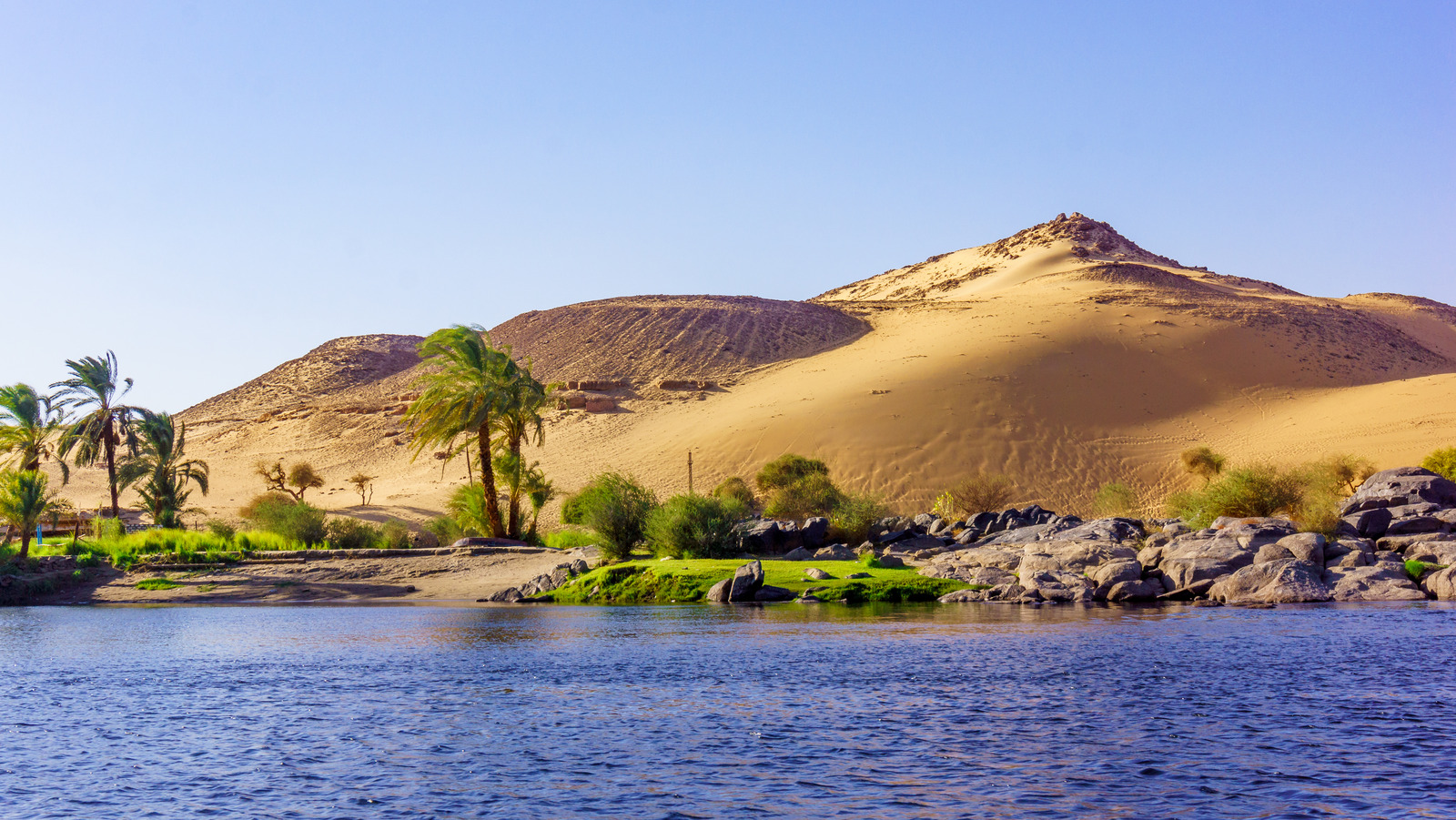The Nile River, the longest river in the world, has held a unique and enduring place in the history, culture, and lifeblood of Egypt. Often referred to as the “lifeblood of Egypt.” The Nile has played a pivotal role in shaping the nation’s identity. It supporting agriculture and providing the sustenance needed for human civilization to flourish.

The Geography of the Nile:
The Nile River, with its two main tributaries the Blue Nile and the White Nile. It Stretches over 6,650 kilometers through 11 African countries. However, it is in Egypt where the river’s significance becomes most evident. The Nile runs from south to north across Egypt. The nation’s civilisation is mostly focused in the Nile Valley, a tiny stretch of lush territory.
Historical Significance:
The Nile’s historical importance to Egypt cannot be overstated. It served as the cradle of one of the world’s earliest and most enduring civilizations. The Ancient Egyptians settled along the Nile around 3100 BC. It depended on its annual floods to provide fertile soil for their agriculture and sustenance. The river’s predictable inundation allowed for the development of a sophisticated agricultural system. Which was the backbone of the Egyptian economy.
Agricultural Abundance:
The Nile’s annual floodwaters brought rich silt and nutrients, replenishing the land’s fertility and enabling the cultivation of crops. The significance of the Nile to Egypt’s agriculture is undeniable. Along the riverbanks, wheat, barley, and other fruits were farmed. The abundance of crops helped Egypt to not only feed its people but also trade with other regions.
Sustaining Life and Culture:
The Nile River has played a profound role in shaping Egypt’s culture, religion, and daily life. It has been a source of inspiration for countless poets, writers, and artists throughout history. In ancient Egyptian mythology, the river was personified as the god Hapi, symbolizing fertility and abundance. The Sacred Connection: Nile River’s Yearly Flooding and Its Spiritual Significance
Modern Infrastructure:
In addition to its historical and cultural significance, the Nile River continues to be an essential resource for Egypt in the modern era. It provides water for irrigation, domestic use, and industry. The construction of the Aswan High Dam in the mid-20th century has allowed for more controlled management of the river’s flow, reducing the risk of devastating floods and ensuring a steady water supply for agriculture and urban areas.
Challenges and Future Sustainability:
While the Nile has been a source of prosperity for Egypt, it also faces challenges such as population growth, increased demand for water resources, and the impacts of climate change. Managing the Nile’s resources sustainably has become crucial for Egypt’s future.
Conclusion:
The Nile River, often referred to as the “lifeblood of Egypt,” has been the driving force behind Egypt’s civilization, culture, and prosperity for millennia. Its historical, agricultural, and cultural significance is deeply embedded in the nation’s identity. As Egypt faces the challenges of the modern era, safeguarding the Nile’s resources and ensuring their sustainable . It use is vital to the nation’s continued growth and prosperity. The Nile remains not only a source of life but also a symbol of resilience and enduring legacy for the people of Egypt.




